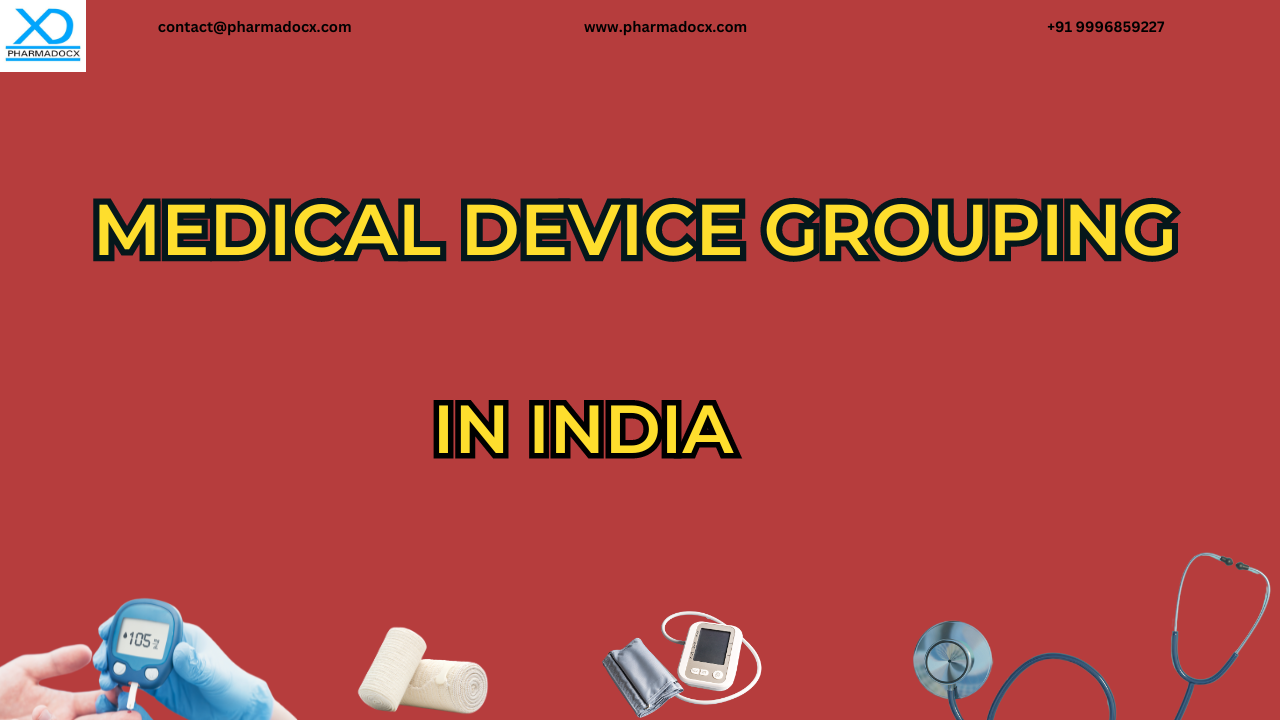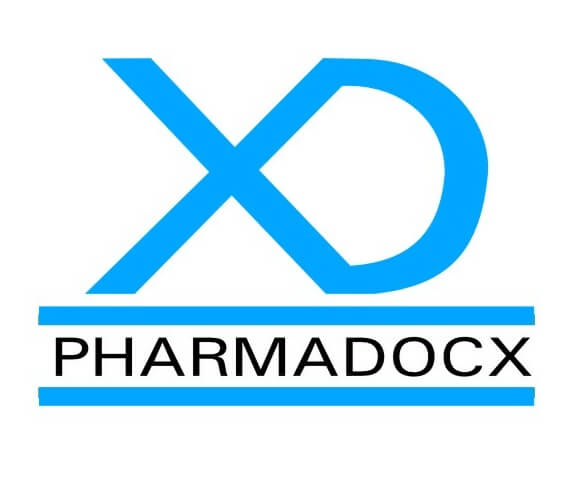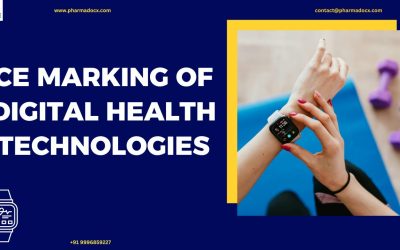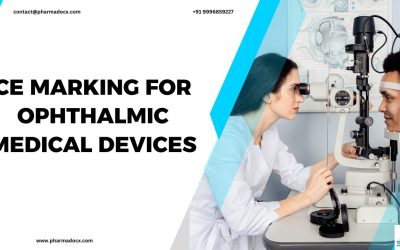Medical device grouping has been introduced to enhance the license application process in India. Grouping of medical devices expedites and simplifies the CDSCO registration and license application process. In this blog, we will delve into the grouping of medical devices in India.
What is medical device grouping?
Medical device grouping guidelines have been specified in the Medical Device Rule (MDR) 2017 by the Indian Ministry of Health. Medical device grouping is the clubbing of medical devices having similar intended use or shared technology. This allows the applicant to submit a single CDSCO license application for a particular medical device group category. Grouping of medical devices is for the convenience of the medical device manufacturer, distributor, or importer. By grouping medical devices having the same intended use or common technology, the applicant may apply for a single license for import or manufacturing. After grouping, medical devices need to comply with the specific regulations for particular categories.
The need for medical device grouping
The goal of medical device grouping is to streamline the CDSCO license application process. Grouping of medical devices will help reduce costs and time for obtaining license for importing, manufacturing, and selling medical devices. Medical device grouping simplifies the application process for CDSCO registration and license. In short, medical device grouping makes the CDSCO license application process cost effective and time saving.
Medical device grouping
Medical device grouping guidelines specify how medical devices can be categorized and grouped for the CDSCO license application. The following are the medical device groups in India:
Single medical device
A single medical device is a distinct packaged item that can be sold as different package units and sizes. It should not fit into any other grouping category, such as family, system group, IVD test kit, or IVD cluster. Medical devices sold separately must be licensed separately. Separate documentation and fees will be required for each single device.
Examples: 1) A company individually selling each medical devices in the first aid kit. Each of these devices will have to be licensed as a single medical device. 2) A company selling one single type of BP monitoring machine will have to apply for a single medical device license.
Family
A collection of medical devices will be considered a family, if the devices have common risk classification, intended use, and design and manufacturing processes. They must belong to the same license holder. The medical devices may have differences but within the scope of permissible variant. The scope of permissible variant is (i) the physical design and construction material are the same or very similar, (ii) the medical device manufacturing processes, including the sterilisation method, are the same or very similar, (iii) the intended purpose is the same, and (iv) the medical risk class device, taking into consideration the above factors, is the same. The device master file is common for the medical device family. This medical device group is licensed as a whole and has a single fee.
Examples: 1) Contact lenses with UV protection as an additional feature. This medical device group can be considered a family, as the add on feature does not change the basic manufacturing process and fundamental design. 2) Condoms with different colour, size and texture can be considered a family. They are manufactured using the same material and manufacturing process. Moreover, their intended purpose is common.
System
A collection of medical devices intended to be used in combination for a common intended purpose. The devices should be compatible when used as a system. Importantly, the devices should be from the same license holder and be sold under single proprietary system name. The constituent components of the system may be used in more than one system. Then, the components should be included in the application for licence for each of the other systems. Separate fees and documentation will be required depending on how the system is sold.
Examples: 1) A glucose monitoring device comprising glucose meter, test strips, and control and linearity solutions can be grouped as a system. 2) A hip replacement medical device set comprising femoral and acetabular components can be grouped as a system. The size of the components may vary. The medical device components must be used in combination for a common intended purpose, namely total hip replacement.
In vitro diagnostics test kit
This medical device grouping comprises reagents or components intended to be used in combination for a specific purpose. Furthermore, the components should be compatible when used as a test kit. The components should belong to same license holder and be sold under a single proprietary test kit name. Individual reagents or components can be supplied separately as replacements for the kit. Instruments, such as analysers, needed to perform tests are not a part of the test kit. If the reagents are to be used in more than one test kits, they should be included in the application of the other test kits. Separate documentations will be required for the components of the in vitro diagnostics test kit. Whether a single application and fee will be required will depend on whether the kit is being sold as a single unit or separate components.
Examples: 1) Human immunodeficiency virus ELISA kit contains various components, such as calibrators, controls, and washing buffers. All components are used in combination for a specific intended purpose, detection of HIV. Hence, this kit can be licenced as an IVD test kit. 2) Coagulation test kits.
In vitro diagnostics cluster
A collection of multiple in-vitro diagnostics reagents or components having a common methodology and compatible when used as test kit. They must belong to the same license holder and be sold under a single brand name. For this medical device group type, the device master file will the same but the application fee will be separate.
Example: Device used for infectious agent detection.
Group
This grouping of medical devices comprises two or more devices serving a common purpose. The medical device group components are sold together in a single package by the same license holder. The component medical devices in the group may have different intended purposes, names, and manufacturers. If a medical device in a particular group is used in another group, that medical device should be included in the application of the other group. The medical devices in a group may differ in the combination and number of products. However, the group’s proprietary name and combined intended purpose should be the same. Single fee and separate documents will be required.
Example: A first aid kit containing medical devices, such as drapes, bandages, gauzes, and thermometers. These first aid kit components are assembled together as one package for a common intended purpose.
Medical device family vs group
Medical device grouping can be confusing, especially the difference between medical device family and group may be difficult to understand. The key difference between the two is: Medical device family includes devices with the same intended use, risk classification, and manufacturing process. However, for medical device group, the components may be manufactured by different manufacturers and combined together for a common purpose. The individual components may have different intended uses and names.
CDSCO regulatory guidelines are in place to monitor and control the medical device market. A CDSCO license is mandatory to market your medical device in India. Medical device grouping guidelines are aimed at simplifying and streamlining the CDSCO license application process. The grouping of medical devices has made the CDSCO license application process fast, cost effective, and efficient. Deciphering the CDSCO regulatory guidelines is a daunting task. However, this can be easy if you let Pharmadocx Consultants be your partner in the CDSCO license application journey. Simply shoot your query at [email protected] or call/Whatsapp on 9996859227.





